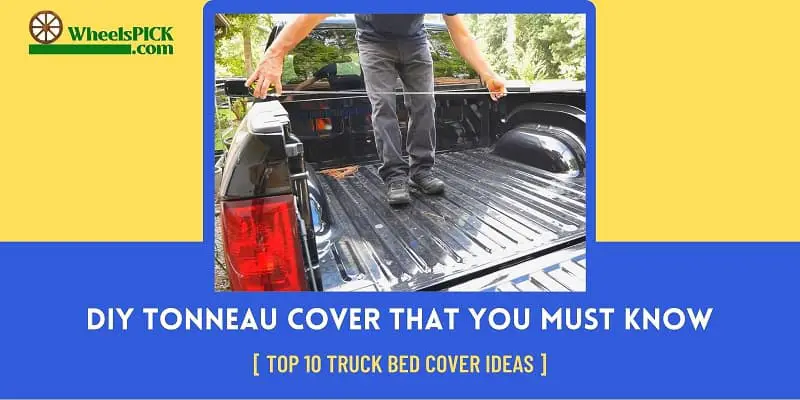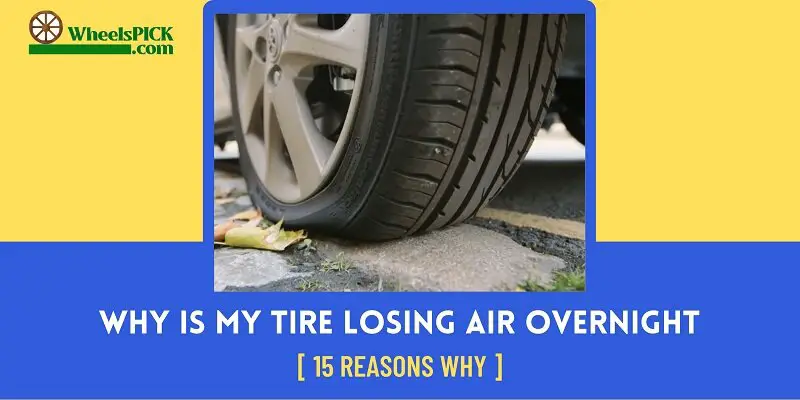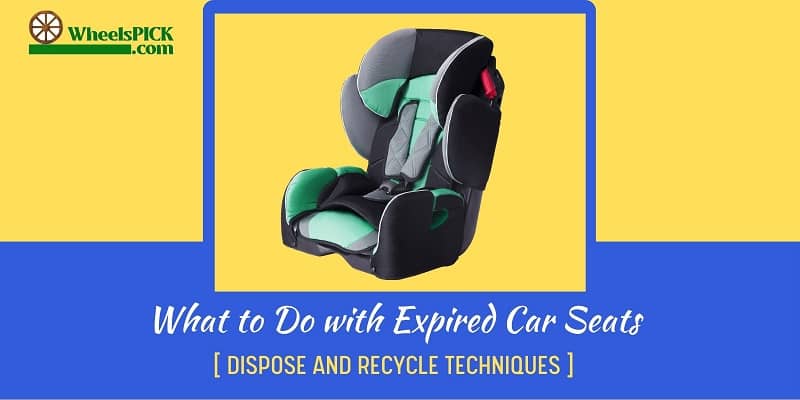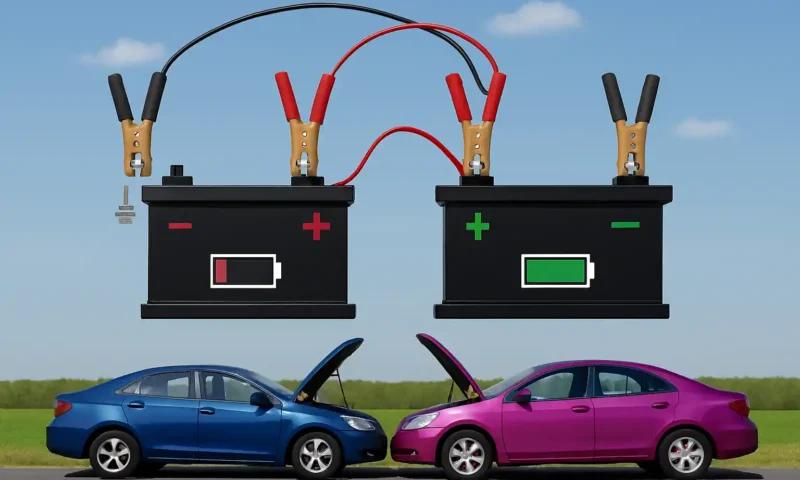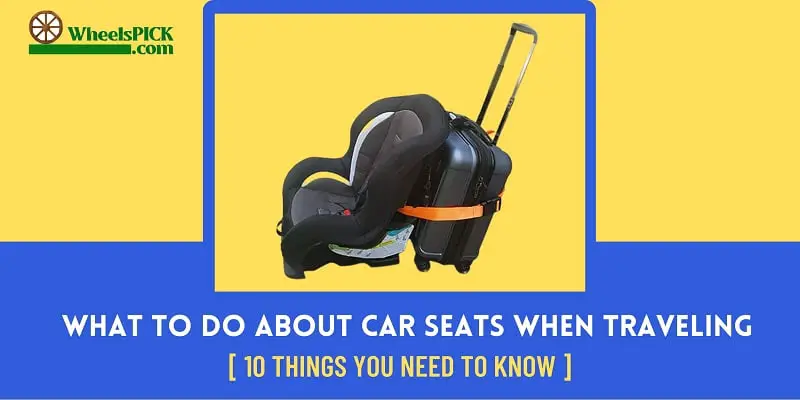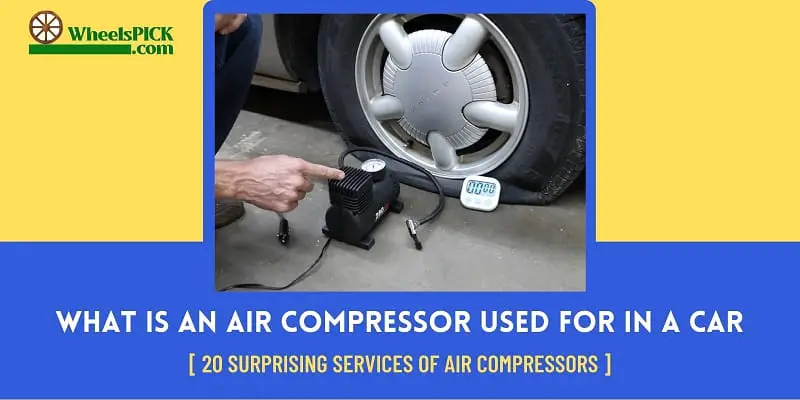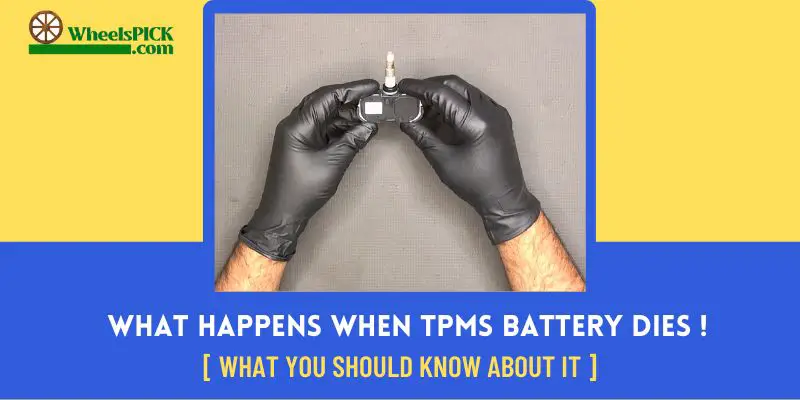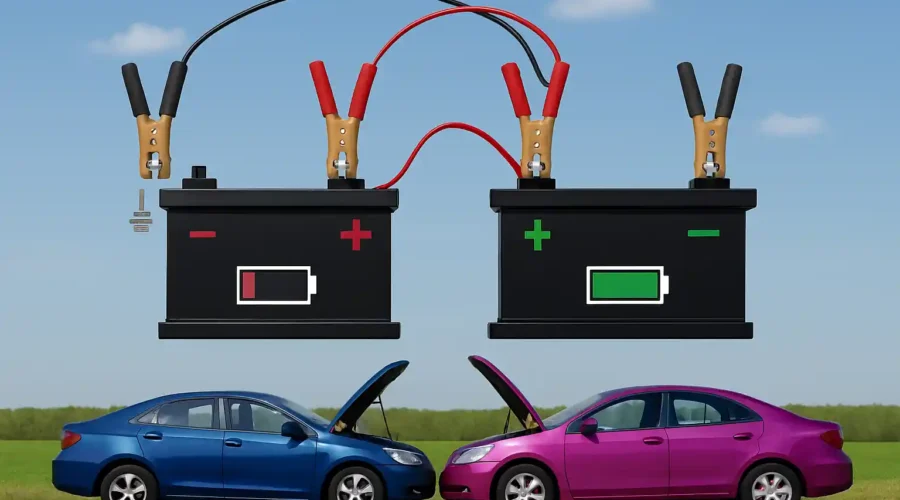Let’s get real; we’re all quite confused about how individuals build their tonneau covers and succeed. They must be some sort of genius, right? Honestly, anybody can do it. Thus to address this dilemma, here are a few details about DIY tonneau cover that you must know.
Think about it; your truck goes through numerous everyday challenges, and most of the time, knowingly and unknowingly, the tonneau cover protects it at all costs. This single addition can make or break your road life.
So, should you be investing in a tonneau cover? Definitely! But what if there was a way out and you didn’t have to spend a fortune on such branded investments? Stay tuned because we’re here to discuss all the possible DIY custom cover ideas that any amateur or professional can implement in a jiffy. So, are you excited to get down to business? You bet!
How To Build Your Own DIY Tonneau Cover
Creating a DIY cover requires a few handy tools and materials. Plywood, hinges, glues, and staplers are some essential items you need to follow the building steps. However, the best component the creator must have is patience and dedication. Thus, even though this may seem impossible, making your DIY tonneau cover is relatively easy, and we’re here to break down how.
Top 10 DIY Tonneau Cover Ideas to Implement
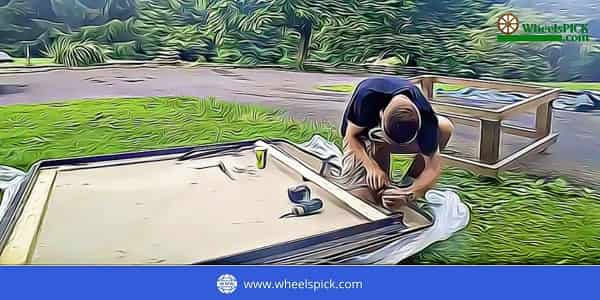
Here’s how we can get right into business and know some essential factors about creating custom covers for your trucks. Starting from the details to the guides, it all matters when it comes to DIY covers. So here are some simple ideas to stand by during your creative journey.
1. Wooden DIY Tonneau Covers
DIY tonneaus made from wood come with high functionality and modification scopes. Moreover, you can install reflectors and other gears along the sides for higher usability.
First, with the wooden tonneau, you must start by measuring the truck’s metal frame. Cut the wood according to the size and screw it on. Once the wooden frame is done, you can cover the top with a hard or soft tonneau, depending on your needs.
2. DIY Aluminum Tonneau Cover
Creating the metal base can be tricky for some users, especially amateurs. With that being said, aluminum covers still provide undeniable strength, robust features, and exceptional protection to trucks.
It requires the same framing essentials but with the aluminum piece. Again, you can switch things up and utilize folded aluminum, plywood, sheet metals, or any other hardwood for the middle section. Working with aluminum is challenging as it requires heavy-duty machinery, which users mightn’t have.
3. DIY Plywood Tonneau Cover
Using plywood is the most common DIY. However, here’s an additional tip. Often users love to purchase a gallon or two of Restore 10x resurfacer in the plywood’s color so that the tonneau cover or the rear end doesn’t get too hot. Moreover, it also leaves a seamless finish.
4. Button-Down Tonneau Covers
If you’re looking forward to making button-down tonneaus, you must look for suitable quality buttons, so they don’t snap. Buttons such as eye-fasteners, hooks, shanks, and flat buttons complement vinyl and canvas tonneau covers quite nicely.
5. DIY Tarp Tonneau Covers
Believe it or not, tarp material’s tonneau covers are one of the cheapest options. With under $10, you can switch things up with some DIY skills. Tarp tonneau covers, if used with proper installation and care, can turn out to be super budget-friendly and long-lasting.
6. DIY Velcro Tonneau Covers
Another easy-peasy DIY cover idea? You should look into the enormous benefits of velcro or vinyl polymer as it’s easy to use and create. Especially around the folded sides, velcro provides high protection and sturdiness around the edges and tricky spots.
7. DIY Hard Tonneau Covers
Generally, for hard tonneau covers projects, people opt for plywood. It’s a given that you must measure the truck and cut the plywood into two pieces accordingly. However, painting over this material may not be necessary, yet it provides further durability. Lastly, simply wrap this with vinyl utilizing glue and stapler.
8. Tonneaus For All Trucks
It’s a no-brainer that since plywood or wood has high usability as tonneaus, people opt for it more for building a DIY tonneau for any pickup truck. However, ensure that no matter which material you choose, you stick to the basic 5-6 step instructions. The steps involve measurement and design, attachments, coating and painting, vinyl wrapping, and last installations.
9. DIY Fiberglass Tonneau Covers
Working with fiberglass isn’t much different than plywood or hardwoods. However, fiberglass offers absolute security over soft tonneau. It’s a good investment and also has superior aesthetics.
10. Folded Tonneau Covers
Folded tonneaus require you to cut the pieces according to how many folds you want in your truck’s bed cover. Next, you’ll need to set up the frame and secure it. Then, you need to drill the tonneau along with the hinges in the folded bits before installation.
Folded tonneaus have higher usability and accessibility, so it’s a more user-friendly alternative.
Types of DIY Tonneau Cover Plans
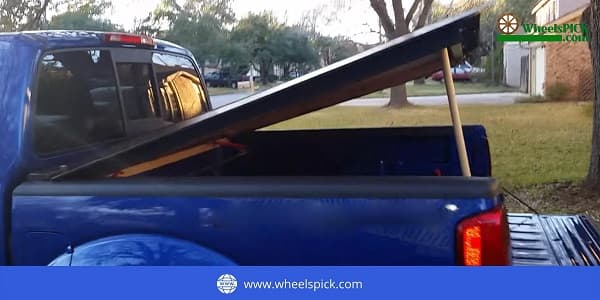
So, how many types of tonneau covers are there? Good question. Let’s check out a few materials that you could use to make one of your truck bed covers.
- Wood
- Plywood
- Aluminum
- Fiberglass
- Tarp
Now, here’s the trick. No matter which material you choose, you must ensure that the tonneau is covered with vinyl polymer or vinyl laminated fabric for long-lasting, lower stretch, and shrink-resistant features.
Some of the materials we’ve listed are tougher to work with than the others but ultimately rely upon personal preference.
DIY Tonneau Cover Advantages and Disadvantages
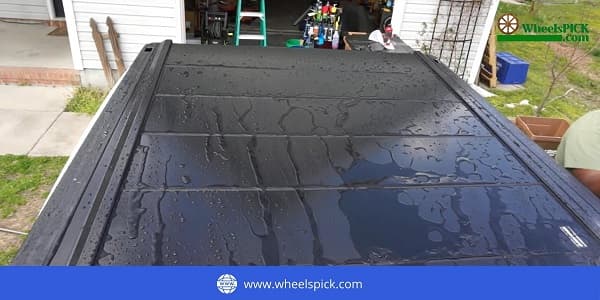
We understand so far that keeping our valuables out in the open or exposing the truck bed can lead to multiple quality and security issues.
Thus, tonneau covers seem like a good way to choose. However, whether it’s a soft custom cover or hard, this product has some drawbacks and advantages that you must look into.
The Pros:
- Tonneau covers can provide easy access if the construction complies with that thought.
- They provide high and unparalleled protection to pickup trucks.
- The DIY feature and design options are endless for tonneau covers and can be single or folded in two to three backs.
- Most tonneau covers, especially the DIY ones, don’t require a key entry.
- They provide high aerodynamics to the truck, which saves a ton of bucks on pumps.
- Can provide high or low profile according to your gear and bed dimensions.
The Cons:
- The measurements in the first step instructions must be precise for the best fit.
- DIY projects’ bed cover can be pretty time-consuming.
- Builders must follow the steps accurately till the tonneau cover installation, as missing them will deteriorate the overall quality and finish.
Why you’ll need DIY Truck Bed Cover
The affordability of these DIY tonneau covers is undeniable. However, there is still more to it. The comprehensive details in making them by yourself come with more significant advantages such as lower theft possibilities, damaged cargo, and gas mileage.
It further prevents your truck’s bed from enduring heavy, physical damages that require arm and leg repair. Moreover, throughout the truck’s lifetime, you will notice that the bed encompasses a better quality standard and tip-top shape than it would without the tonneau cover.
Things To Consider Before You Start DIY Tonneau Cover
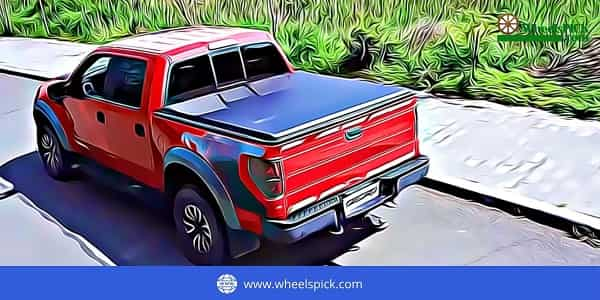
So, what must you consider before investing your time and energy into making these various pieces? Let’s take a gander.
-
Compatibility
You can’t choose and whip up impressive projects on a whim. It needs to match your vehicle type, model, and other elements. One cover type and features might serve you beyond expectation in one truck but mightn’t do the same for different versions.
Therefore, users must adequately measure the truck bed size and build and modify it accordingly. Here’s a tip; start measuring from the bulkhead and work your way up to the tailgate for higher accuracy.
- Materials
The material you pick to make your tonneau will eventually influence its overall quality, usability, and sturdiness. All materials have disadvantages and advantages and thus, must be chosen only after thorough research.
Users must look into the materials, their type, conditions, and features and match that with their truck and personal needs. For example, aluminum makes the sturdiest covers, whereas fiberglass and plastic are highly weatherproof.
- Climate
The material you picked for your truck must be able to take a beating. Whether you live in a wet or hot region, you must match the materials, design, and style accordingly so it lives up to your standards and doesn’t leak, dampen and become brittle with climate change.
- Maintenance
You can’t think that making and installing tonneaus doesn’t come with some aftercare. Some materials require gentle cleaning, whereas others might allow something abrasive.
Whichever cleaning method you utilize, it’s a necessity to clean them now and then other than when you ride through dirt or compromised weather.
Process in Making Do-It-Yourself Hard and Soft Tonneau Cover
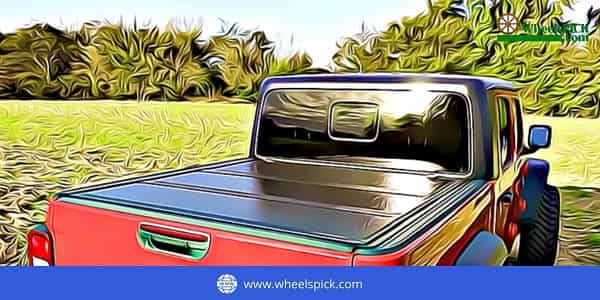
Clearly, there are some differences between building a hard and soft cover. But what are they? And how does the DIY differ? It’s time to find out!
DIY Hard Tonneau Cover Process
- Start with the measurements of the bed and make two frames using six plywood pieces. One frame must attach to the cover and the other to the bed.
- Ensure perfect fit of the frames as they will protect and maintain structural integrity if done right.
- To protect the frames further, you can paint them to prevent moisture growth.
- Apply contact glue next to the plywoods and wrap the vinyl fabric around it. Ensure the edges are adequately fit and there are no loose ends.
- Lastly, install the truck and the cover with hinges and screws as needed. You can also apply rubber seals on the edges for higher protection.
DIY Soft Tonneau Cover
- Start with the measurements of the bed and make a frame that goes around the truck bed’s metal frame.
- Drill through the frames and secure them with the metal bedsides using screws and nuts.
- Purchase a tarp and double up the tarp seams and fold them.
- Place two more screws around the corners to attach them to the wooden frames.
- Tuck in the end tarp bits into the tailgate, and you have yourself waterproof, soft covers!
Step-By-Step Instructions for Creating DIY Tonneau Cover
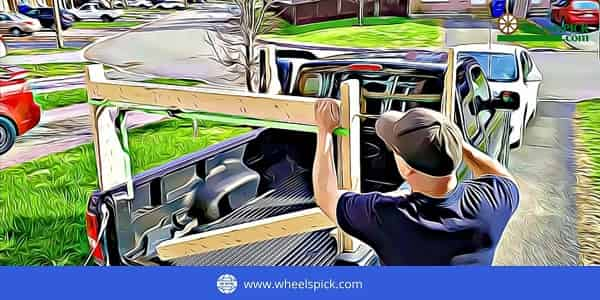
And now we begin the fun part. How to make your own DIY tonneau cover? Keep reading and watch through the steps to become a pro!
- Step#1
Begin by making two 1×2 plywood frames. One of these plywoods must be fixed to the truck bed. And the other is to attach to the liftable portion of the cover. - Step#2
The frames must fit the truck bed correctly and according to measurements. This sizing also needs to have a 1-cm gap on either side between the truck bed and wooden frame. Ensure the proper size and measurement of the structure here as it provides the ultimate integrity and strength. - Step#3
Next, cut two pieces of plywood for the frames. However, the plywood measurement must exceed the vertical and horizontal lengths of the bed frames and be identical to the truck bed edge’s width. If you want your plywood to lay flat atop the bed, it must sit tightly and cover all the edges adequately. - Step#4
Install the plywood hinges and ensure the frames don’t overlay one another. - Step#5
Paint the plywood with black paint; however, it’s not necessary. However, painting it over restores the wood’s moisture, durability, and lifespan qualities. - Step#6
Let the paint dry completely and fix the hinges on the spots where the tonneau covers fold.
Now, most people might skip the next bit. However, integrating the uses of vinyl fabric has unparalleled quality advantages. This will not only improve the truck bed’s overall functionality but also play a greater role in its durability. Here’s what you need to do.
- Step#1: When you’re done with all the previous steps, layer the wood and the backside of the vinyl fabric with spray glue.
- Step#2: Once you secure the plywood with the previous step, lay the vinyl over it and even it out. Secure all the edges using contact glue.
- Step#3: Secure the edges with the stapler or staple gun next, and remember to fold the sides of the fabric before doing so.
- Step#4: Next, install the tonneau cover with screws and T-nuts along the frame. And voila! You have yourself the perfect, all-rounder tonneau cover!
The Procedure of Tonneau Cover DIY
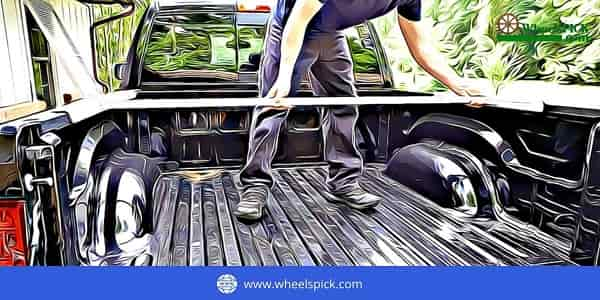
We’ve seen how to make a tonneau cover that would fit any truck type. But now, let’s summarize the steps and discuss the essential procedure you must follow. Let’s get into it.
- Cut the plywood according to measurements and desired style and shape.
- Assemble the plywood and attach it to the truck’s frame.
- Paint the plywood for higher usability and protection.
- Attach the vinyl polymer fabric with contact glue and even it out.
- Install the wooden cover and use a rubber seal around the edges to prevent leaks or other weather damage.
Tools and Materials Needed to Make a Tonneau Cover
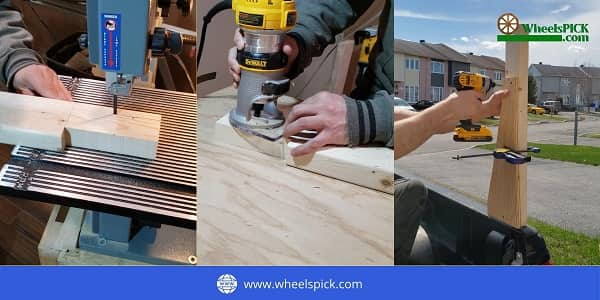
Before you jump into the DIY straight away, let us make things a bit simpler for you. What will you need to make these DIY tonneaus? Check out the list below to know!
| Sl. No.: | Tools Required To Make Homemade Tonneau |
|---|---|
| 1 | Plywood Sheets |
| 2 | Plywood |
| 3 | Table saw |
| 4 | Piano Hinges |
| 5 | Drill Machine |
| 6 | Vinyl fabric |
| 7 | Staple gun or staplers |
| 8 | Screws |
| 9 | Contact Glue |
| 10 | Black Paint |
Are Tonneau Cover Parts Identical?
Tonneau covers can never be identical or universal, even though some of their benefits are the same. They act as heavy-duty cargo protectors but with varying designs, compartmentation, and features. Moreover, tonneau covers also have a wide price range for which the offerings contradict.
Final Thoughts
Phew, now that’s a wrap on our DIY tonneau cover idea topic. Now you finally have a way of safeguarding your beloved truck and one of the most vital parts – the bed. With the comprehensive details and ideas we’ve shared, it’s no wonder that creating this incredibly innovative item will be exciting, fun, and highly knowledgeable.
It will also give you a heads up on different kinds, features, and requirements that a tonneau cover must-have, whether you’re an expert or a professional. There’s not much left to do now. All you need to do now is count your personal preferences and needs and match that with the DIY options.
The best part comes afterward: showing off your handmade creation to your folks!

